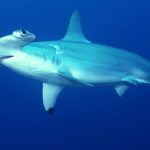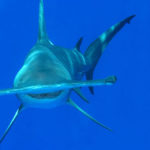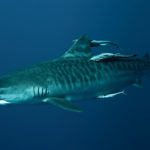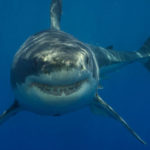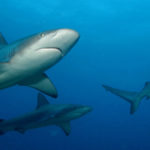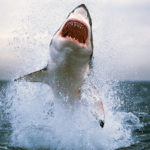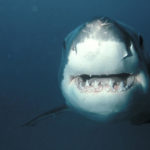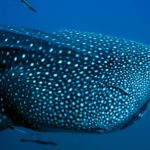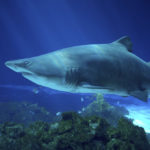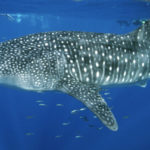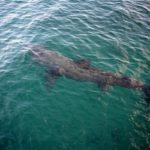Facts about hammerhead sharks
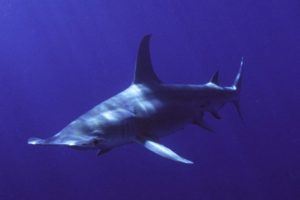 Among all the inhabitants of the sea who attack a person, the most terrible is a shark. Bloodthirsty, tricky and lightning-fast – she aroused fear at people at all times. The most dangerous is the white shark, followed by a tiger shark. And an honorable third place went to a shark-hammer.
Among all the inhabitants of the sea who attack a person, the most terrible is a shark. Bloodthirsty, tricky and lightning-fast – she aroused fear at people at all times. The most dangerous is the white shark, followed by a tiger shark. And an honorable third place went to a shark-hammer.
The hammerhead shark is one of the largest sea creatures. Its average size is 4-5 meters, but you can meet those whose size has exceeded 7 meters. Near the coast of New Zealand caught the world’s largest hammerhead fish – 7 meters long by 89 centimeters and weighing 363 kilograms.
The hammerhead shark is the most common and one of the oldest fish on our planet (the history of the existence of the hammerhead is about 25 million years old).
It occurs in all the warm seas, but sometimes it comes across the northern shores of Europe. The number of shark hammer surpasses many other types of sharks. After all, only the number of embryos of a shark-hammer reaches 30, sometimes even up to 40 pieces.
The sight of a shark hammer is truly awesome. All who saw her say that this is the most terrible fish of all seas and oceans. The flat head is divided into 2 lobes, at the end of each two small eyes are located. The head is nothing more than a large, flat nose, as along the entire front edge there are grooves to catch the smell – peculiar “nostrils”. In addition, there is a hypothesis that this head serves as a rudder.
The body is covered with a pockmarked skin. The upper part of the body is dyed grayish-brown, and the lower part is dirty white. Large, protected by centuries, the eyes have a golden yellow color. And its teeth are long, sharp, saw-toothed at the edges.
Hammerhead sharks are ferocious predators and not only because of their considerable size. They are excellent swimmers, very maneuverable. In addition, sharks are able to develop high speed. The main food of these sharks are invertebrates (shrimps, crabs, mollusks), fish, as well as squid. A real delicacy for them is stingrays and flounder. Maybe that’s why sharks prefer a muddy seabed to any other place of residence.
It happened that the shark-hammer was eating the larger inhabitants of the seas. The hammerhead shark often devours its more distant relatives, the tail beetles, without fear of their poisonous thorns. Apparently, they developed immunity against thorns secreted by spines. Incredibly, there were sharks and cannibals. In the stomach of one, the remains of four of her relatives were found.
To hunt, the hammerhead shark is perfectly fitted. Some fish, trying to escape from fangs, poisons and electric shock, burrow into the sand and freeze there. But they also have no chance, because while they are alive, their bodies generate electric fields, which catch their own unusual head hammerhead: the predator rushes, as it seems, directly to an empty ground and pulls out of it a beating victim.
